Stretching Beyond Comfort Zones: Temple Grandin’s Insights for Educators
Temple Grandin teaching insights
Temple Grandin’s experiences provide invaluable insights for educators working with students on the autism spectrum, emphasizing the importance of “stretching” – encouraging students to try new things just outside their comfort zones. This approach empowers students while gently pushing their boundaries, allowing them to feel in control. Implementing these strategies can create a more inclusive and supportive learning environment, helping students to stretch beyond their comfort zones and reach their full potential.
What you will learn:
✅ Temple’s experience at her aunt’s ranch, which led to her career in the cattle industry.
✅ The importance of having a name on a room door to provide consistency and reduce anxiety.
✅ Using a cattle chute as a calming mechanism during sensory overload.
✅ Gradually introducing a student to Play-Doh, from observing to eventually enjoying the activity
✅ Taking students on individual excursions before group outings to familiarize them with new environments
✅ Breaking down the process of learning to ride public transportation, from sitting on a stationary bus to learning routes
✅ Using YouTube videos to familiarize students with new experiences before they occur
✅ Transforming fear of construction work into an interesting learning opportunity by observing and explaining the process
✅ Gradually introducing students to camp experiences, starting with sleepovers at familiar places
PLUS Free Online Webinar
Don’t forget this free training Webinar is the first lesson in my Temple Grandin and Sue Larkey Course!
Lesson 1: Knowing How and When to Extend Your Students on the Spectrum (Stretching) – 40 Minutes
You Will Learn:
- Guide to Manage Anxiety and Behaviour when Extending your Students’ Abilities
- Key Methods to Extend using ‘real’ choices
- Critical Importance of Exposing Students to a Range of New Activities
- Strategies to use when your Students say ‘No’ to trying New Things
- Insights on How Long to Persist with New Activities
- Key Steps to Teaching Persistence
- Strategies to Teach Students the Importance of Making Mistakes
The Power of Real Choices in Student Growth
Temple Grandin’s experiences offer valuable lessons for educators working with students on the autism spectrum. One key takeaway is the concept of “stretching” – encouraging students to try new things just outside their comfort zone. Grandin’s mother exemplified this by giving her real choices, such as deciding between staying at her aunt’s ranch for a week or the entire summer.
This approach allows students to feel in control while still pushing their boundaries.
Gradual Exposure: The Key to New Experiences
Grandin emphasizes the importance of gradual exposure to new activities.
For instance, she describes learning to drive by starting on country roads before tackling busy highways. Educators can apply this principle by breaking down new experiences into smaller, manageable steps. This might mean introducing a student to a new environment gradually or allowing them to observe an activity before participating.
Embracing Failure as a Learning Opportunity
One of Grandin’s powerful messages is the importance of teaching students that it’s okay to fail. She shares her own experience of failing her first driving test but persevering to pass later. Educators can foster this mindset by sharing their own experiences with failure and emphasizing that mistakes are opportunities for growth.
Minimizing Surprises to Reduce Anxiety
Grandin stresses the importance of avoiding surprises, which can be particularly distressing for students with autism.
Educators can implement this by providing clear schedules, explaining upcoming changes, and offering detailed information about new experiences. This proactive approach can significantly reduce anxiety and improve student engagement.
Making the Scary Interesting
An innovative approach Grandin suggests is transforming potentially scary experiences into interesting ones. For example, if construction work is planned near the school, taking students to observe the preparation can turn a potentially disruptive event into a learning opportunity.
This strategy can be applied to various situations, helping students overcome fears through curiosity and understanding.
10 CONCRETE, ACTIONABLE EXAMPLES FROM THE PODCAST THAT EDUCATORS CAN IMPLEMENT
1.
Offer real choices, such as “Do your homework at 4 PM or 5 PM?” instead of “When will you do your homework?”
2.
Introduce new activities gradually, starting with 20 minutes a day.
3.
Share personal stories of failure to normalize the experience for students.
4.
Pre-warn students about upcoming changes or events to minimize surprises.
5.
Use YouTube videos to familiarize students with new experiences before they occur.
6.
Start with one-on-one instruction for new skills before introducing them in a busy classroom.
7.
Encourage students to try activities for a set period (e.g., six months) before deciding to quit.
8.
Take students on individual excursions before group outings to familiarize them with new environments.
9.
Use visual aids, such as name tags on lockers or doors, to provide consistency and reduce anxiety.
10.
Transform potentially scary experiences into interesting learning opportunities by providing information and context.
RELATED PRODUCTS

UNDERSTANDING AuDHD: Teaching & Supporting Students with Autism and ADHD Co-occurrence
✅ 2 Hours, 8 Lessons
✅ 6 Weeks to Complete 🎁 Bonus 6 Months Access (available until 28 Oct 25)
✅ Certificate of Completion
✅ Lesson Transcripts
 2 Hours
2 Hours
 Certificate
Certificate
USUALLY $149, NOW $49


Join me on Instagram!
I am always sharing stories and new content

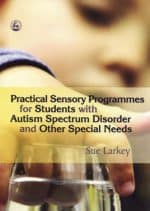
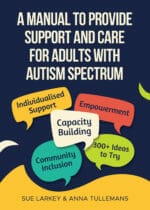

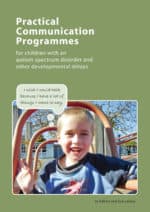
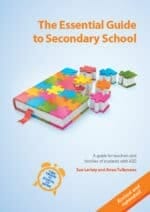



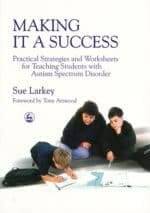





 Sorry we no longer ship items outside Australia. Please consider the digital versions of Sue’s Books –
Sorry we no longer ship items outside Australia. Please consider the digital versions of Sue’s Books – 